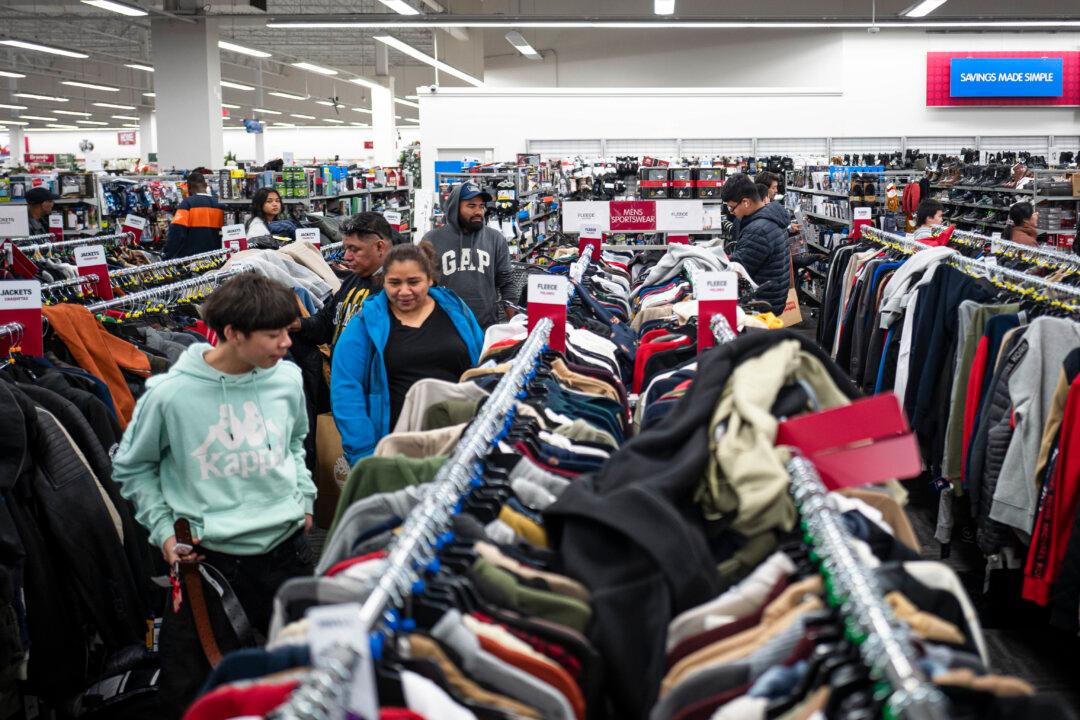The U.S. economy is forecast to have grown by just 0.3 percent in the second quarter, the Federal Reserve Bank of Atlanta says.
According to the regional central bank’s closely watched GDPNow estimate, that’s slightly higher than the previous week’s projection of zero percent. Despite the slight uptick, this is still well below the peak of around 2.5 percent in the middle of May.
“After recent releases from the Federal Reserve Board of Governors, the National Association of Realtors, and the US Census Bureau, the nowcast of second-quarter real gross private domestic investment growth increased from -9.0 percent to -8.1 percent,” the Atlanta Fed Bank said in a statement.
The next update will be released on June 30.
The Current State of Recession Talk
A growing number of Wall Street firms and economists have either boosted their odds of a recession or have started to pencil in an economic downturn within the next 18 months.Investment bank Nomura made headlines when it reduced its GDP forecast to 1.8 percent growth in 2022 and 1 percent contraction in 2023. Meanwhile, analysts increased their unemployment expectations to above 5 percent by the end of next year and close to 6 percent in 2024.
“With rapidly slowing growth momentum and a Fed committed to restoring price stability, we believe a mild recession starting in Q4 2022 is now more likely than not,” the analysts said.
The silver lining, however, is that Nomura expects the recession to be mild because consumers put together a reasonable financial cushion during the COVID-19 pandemic.
A recent Reuters poll of economists boosted the chances of a recession in the coming year to 25 percent. Over the next two years, there’s a 40 percent probability.
Goldman Sachs Chief Economist Jan Hatzius increased the odds of a shallow U.S. recession in the next two years to 50 percent, from the previous estimate of 35 percent. But Hatzius noted that a recession still isn’t the bank’s baseline scenario.
JPMorgan Chase echoed Goldman Sachs’s position, saying that “the probability of recession increased meaningfully” to 1 in 3, but it isn’t “a base case over the next 12 months.”
Speaking at a press conference during the annual Article IV consultation to review the U.S. economy, International Monetary Fund Managing Director Kristalina Georgieva said there is “a narrowing path” to averting a recession, alluding to “significant downside risks.”
“Based on the policy path outlined at the June FOMC (Federal Open Market Committee) meeting, and an expected reduction in the fiscal deficit, we expected the U.S. economy will slow,” she said. “We are conscious that there is a narrowing path to avoiding a recession in the U.S. We also have to recognize the uncertainty of the current situation.”
Last month, the Fed Bank of Philadelphia’s Second Quarter 2022 Survey of Professional Forecasts lowered the real GDP annual growth rate to 2.3 percent from the previous 4.2 percent expectation. It also trimmed its GDP forecast to 2.3 percent in 2023 and 2 percent in 2024.
Are Stagflation Risks Greater?
But while everyone is talking about recession, the risk of stagflation—an environment of high inflation and stagnating growth—is also being discussed by many experts.According to a new Securities Industry and Financial Markets Association study, 80 percent of economists listed stagflation as the greater long-term threat to the U.S. economy.
In addition, a recent Bank of America global fund manager survey discovered that stagflation fears were the highest registered since June 2008.
“The baseline is stagflation—what we are experiencing now,” Mohamed El-Erian, economist and president of Queens’ College at Cambridge University, told Yahoo Finance Live. “So you have a baseline that is not very comfortable, stagflation, and then you have a balance of risk which is the wrong way—recession.”
Writing in a LinkedIn post last week, billionaire Bridgewater Associates founder Ray Dalio thinks the U.S. central bank’s actions will steer the economy into stagflation, adding that the institution’s policies “have not been good.”
“The Fed is moving from printing and buying debt at an annual rate of around $1.5 trillion to selling it at an annual rate of $1.1 trillion, and from sharply lowering interest rates to sharply raising them,” he said. “For that reason, we experienced the big lurch forward and are now experiencing the big lurch backward.”
“There isn’t anything that the Fed can do to fight inflation without creating economic weakness,” he added. “Over the long run, the Fed will most likely chart a middle course that will take the form of stagflation.”
Others have also questioned the Fed’s effectiveness.
Jason Brady, president and CEO at Thornburg Investment Management, stated that it’s unclear if the central bank can successfully tamp down prices.
“Similarly, I question whether they’ve been overwhelmed by events beyond their control,” Brady wrote in a research note, adding that the Fed is so far behind the curve.
The Federal Reserve will hold its next two-day FOMC policy meeting on July 26–27. According to the CME FedWatch Tool, most of the financial market is projecting a 75-basis-point rate increase.
Whatever the case, consumers have turned ultra-bearish on the U.S. economy as the University of Michigan’s June Consumer Sentiment Index slumped to a record low of 50, down from 58.4 in May.





